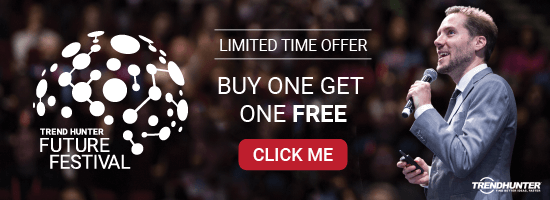Revisiting the 5 Biggest Business Trends for 2016

They say there’s nothing new under the sun. Well, whoever “they” are, they likely never tried to build a business. Because in business it’s always about finding something new that somehow allows you to differentiate and capture an advantage-fleeting though it may be. At the end of 2015 I identified five critical trends to give you that edge. And if you find yourself saying, “Hey, that’s not new!” you may want to reconsider because all too often we look at the future through the lens of the past, and that’s a great way to miss the biggest opportunities.
So, how many of these trends are you already using to your business’s advantage?
1. Business Ecosystems
One of the greatest opportunities in how we build and scale businesses is coming from the emergence of an obscure new model that’s being called a Business Ecosystems. Simply defined a business ecosystem is an orchestrated set of capabilities across digitally connected businesses and consumers that creates entirely new value. Ecosystems form a platform on which you can easily do business, but only if you can plug into that platform. Take for example Apple’s App Store. Better yet, think of it this way; the ecosystem business model is to commerce what telecommunications was to globalization. Both create a universal platform on which you can build unimagined new value and both are absolutely critical if you intend to compete. The difference is that business ecosystems involve much more than just a superficial connections; they cut deeply into nearly every aspect of how a business builds products, services, and customer experiences- to the point where the very notion of organizational boundaries begins to disintegrate.
2. Datafication
Datafication is the ability to understand and predict behaviors through the availability of massive amounts of realtime data. But don’t confuse this with Big Data, which is great for analytics but doesn’t necessary help to take action in the instant that an opportunity exists. Some of the best examples are real-time GPS, such as WAZE, that factor real-time traffic patterns, weather, and road conditions into the best route, and adjust that route in the moment. Companies such as Confluent are using a form of datafication called “streams” to help Netflix, Uber, and LinkedIn make real-time recommendations to users. With more computing devices projected by 2100 than there are grains of sand on all the world’s beaches, we are moving towards a hyperconnected reality that will breed entirely new categories of datafied products and services.
3. The Frictionless Economy
The most successful businesses-whether Tesla or Google, Amazon or Netflix, Uber or MoDe, Alibaba or Samsung, Nest or Climate Corporation, GE or Discovery Health, Oculus or Oracle all reflect the new competitive reality that the most opportune markets for disruption are those that have the greatest organic friction. That’s because these markets have evolved organically over time; none of them were ever really architected, they just sort of incremental and haphazardly grew. Uber is one of the best examples. Virtually everyone who’s ever ridden in a cab has bemoaned all of the archaic aspects of the experience, from the sorry state of cabs to the ridiculous fee structures, to the cost of medallions, to the haphazard quality of the drivers. Yet, we accepted it all as just a part of a system that had grown up that way; the friction was there but none dared to reconstruct an industry so mired in legacy. The same is true of some of the biggest challenges that face us in healthcare, education, and financial services. All have evolved into arcane mazes of policy and procedure that make little sense from the vantage point of the ultimate consumer. In the same way that you can’t get over a certain MPG using an internal combustion engine and you instead need to change the entire platform, as did Tesla, the single biggest area of economic growth will be in rebuilding these industries as entirely new frictionless platforms.
4. The Industrial Internet of Things (IIoT)
The IoT, or the Internet of Things, has been front and center during 2015. From smart homes to connected cars, we are experiencing first-hand the consumer face of the IoT. But the bigger trend is the evolution of connected machines to machines. This is the single fastest growing number of Internet connections, eclipsing the person to person, and person to machine connections being created by nearly one order of magnitude. There are 10 billion user computing devices in the world and more than 100 billion connected machines.
“The IIoT will alter the nature of business in ways that will make the industrial revolution look like a speed bump on the road towards automation.”
But connections are just the start. The real opportunity is in how these machines are evolving into new forms of intelligence. Forget “lights out” factories and think “lights out innovation!” The IIoT will alter the nature of business in ways that will make the industrial revolution look like a speed bump on the road towards automation. Imagine supply chains that are self-organizing, AI controlled marketing and advertising, predictive models for not only how factories operate but what they actually produce. Far fetched? Not really! Companies such as GE and E2Open are already creating autonomic engines that drive markets and reconstitute supply chains without any human intervention.
5. Conversational Intelligence
We’ve all heard about Emotional Intelligence, the ability to be self-aware of how behaviors and actions impact on others. What few of us are as aware of is the emergence of Conversational intelligence, the understanding of how conversations actually rewire our DNA and brain chemistry. There are 30 years of deep research in this field and we are just beginning to understand how critical conversation is to actually shaping our biology. So why is this increasing in importance? Simple; most of our conversations are now in digital form. Many of us have long since passed the point where over 50% of our daily communication happens online. The science of understanding what this means and how to effectively harness digital conversations to create and reinforce trust, collaboration, and alignment among teams is one of the most important challenges as we move towards a globally connected human population where the notion of face to face becomes an increasingly smaller slice of how we interact and create value. Check out the book by Judith Glaser on Conversational Intelligence.
This article was originally published on Inc.
Wait! Before you go…
Choose how you want the latest innovation content delivered to you:
- Daily — RSS Feed — Email — Twitter — Facebook — Linkedin Today
- Weekly — Email Newsletter — Free Magazine — Linkedin Group
 Tom Koulopoulos is the author of 10 books and founder of the Delphi Group, a 25-year-old Boston-based think tank and a past Inc. 500 company that focuses on innovation and the future of business. He tweets from @tkspeaks.tom
Tom Koulopoulos is the author of 10 books and founder of the Delphi Group, a 25-year-old Boston-based think tank and a past Inc. 500 company that focuses on innovation and the future of business. He tweets from @tkspeaks.tom
NEVER MISS ANOTHER NEWSLETTER!
LATEST BLOGS
Three things you didn’t know about credit cards
Photo by Ales Nesetril on Unsplash Many of us use credit cards regularly. From using them for everyday purchases to…
Read MoreFive CV skills of a business-minded individual
Photo by Scott Graham on Unsplash The skills listed on a CV help employers quickly understand your suitability for a…
Read More


